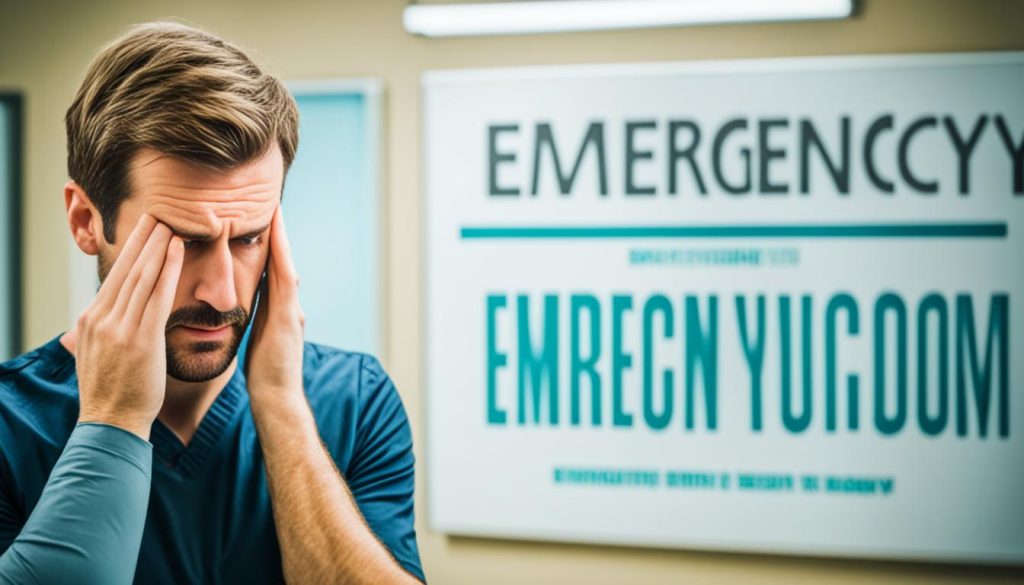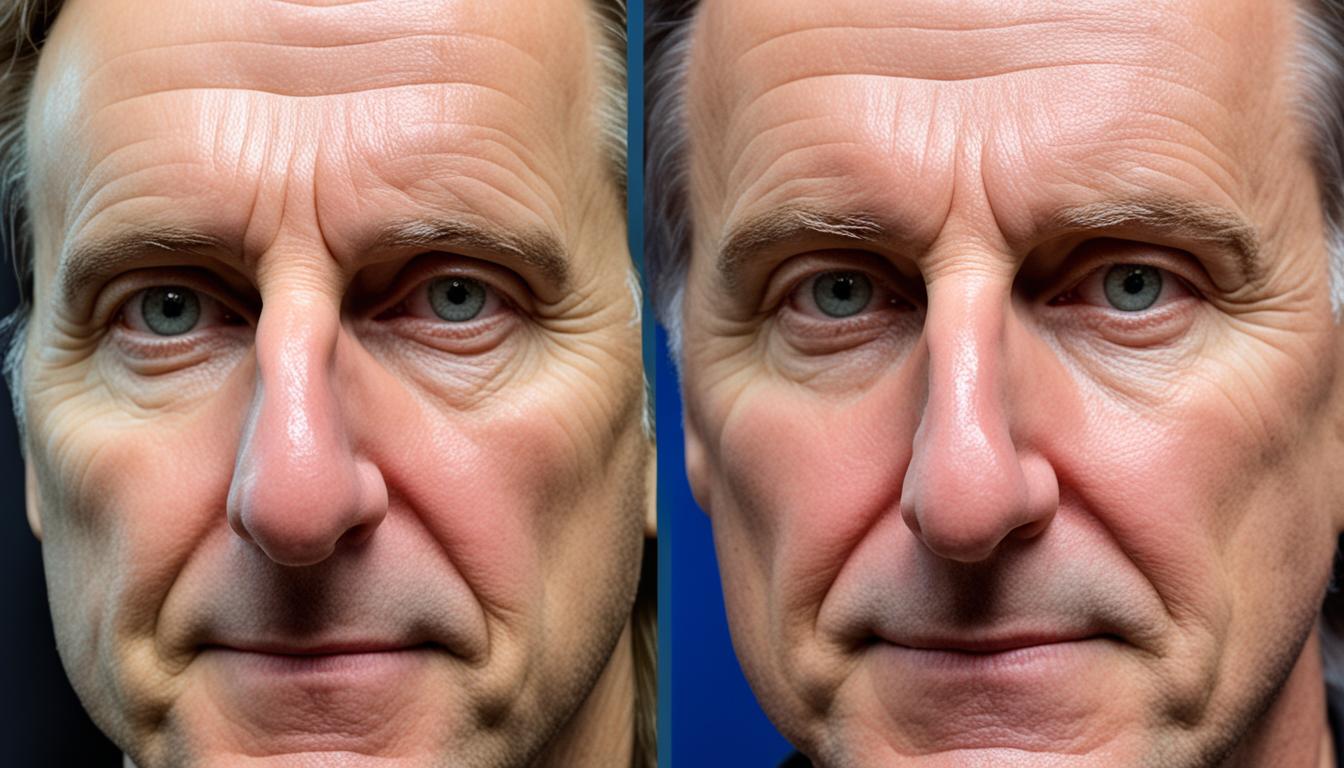Have you recently experienced a nose injury and are wondering if it’s broken or just swollen? It’s essential to differentiate between the two to ensure appropriate care and treatment. In this article, we will discuss the symptoms of a broken nose, how to distinguish it from mere swelling, and when to seek medical attention. By understanding the signs and taking the necessary steps, you can ensure proper healing and recovery.
How to Know if Your Nose is Broken or Just Swollen?
Before we delve into the details, let’s briefly understand what a broken nose is. A nasal fracture, also known as a broken nose, occurs when there is a break or crack in a bone in your nose, often the bone over the bridge of your nose. Common causes include contact sports, physical fights, falls, and motor vehicle accidents.
Now, let’s explore the symptoms that can help you differentiate between a broken nose and mere swelling. The typical signs of a broken nose include pain or tenderness, swelling of the nose and surrounding areas, bleeding from the nose, bruising around the nose or eyes, crooked or misshapen nose, difficulty breathing, and discharge of mucus from the nose.
If you experience a nose injury accompanied by a head or neck injury, difficulty breathing, uncontrolled bleeding, or a noticeable change in the shape of your nose, it’s crucial to seek emergency medical attention. These symptoms can indicate a more severe injury and may require immediate evaluation and treatment by a healthcare professional.
In the following sections, we will discuss the causes and risk factors of a broken nose, potential complications, prevention strategies, treatment options, when to see a doctor, and how doctors diagnose a broken nose.
Remember, by understanding the symptoms and seeking proper medical attention, you can ensure the best course of treatment and a faster recovery. Let’s continue reading to learn more about differentiating between a broken nose and mere swelling.
Signs and Symptoms of a Broken Nose
Recognizing the signs and symptoms of a broken nose is crucial in understanding the severity of the injury and determining the appropriate course of action. While a swollen nose can produce similar symptoms, there are key differences that can help differentiate between the two.
Common broken nose symptoms include:
- Pain or tenderness in the nose area
- Swelling of the nose and surrounding areas
- Bleeding from the nose
- Bruising around the nose or eyes
- Crooked or misshapen nose
- Difficulty breathing through the nose
- Discharge of mucus from the nose
- Feeling of nasal passage blockage

These broken nose symptoms can assist in distinguishing between a broken nose and mere swelling. While swelling may also cause pain, tenderness, and shortness of breathing, the presence of bleeding, bruising, and a crooked nose are often indicative of a broken nose.
To provide further clarity, let’s consider a table that compares the symptoms of a broken nose with those of a swollen nose:
| Symptoms | Broken Nose | Swollen Nose |
|---|---|---|
| Pain or tenderness | ✓ | ✓ |
| Swelling | ✓ | ✓ |
| Bleeding from the nose | ✓ | |
| Bruising around the nose or eyes | ✓ | |
| Crooked or misshapen nose | ✓ | |
| Difficulty breathing through the nose | ✓ | ✓ |
| Discharge of mucus from the nose | ✓ | ✓ |
| Feeling of nasal passage blockage | ✓ | ✓ |
As seen in the table, a broken nose exhibits the majority of these symptoms, while a swollen nose will typically only present with pain, tenderness, swelling, and difficulty breathing. It is important to consider these indicators when assessing the nature of a nose injury.
Causes and Risk Factors of a Broken Nose
Understanding the causes and risk factors of a broken nose can help you be more aware and take precautions to prevent such injuries. Common causes of a broken nose include:
- Injury from contact sports, such as football, basketball, or boxing, where the nose can be easily hit or slammed into by an opponent or equipment.
- Physical fights or altercations that involve direct blows to the face or nose.
- Motor vehicle accidents that result in a sudden impact to the face, whether from hitting the steering wheel or dashboard.
- Falls, especially if you land on your face or head, can cause significant trauma to the nose.
- Sometimes, even something as simple as walking into a fixed object, such as a door frame, wall, or pole, can lead to a broken nose.
In addition to specific causes, there are also certain risk factors that increase the likelihood of a broken nose:
- Engaging in activities that increase the risk of facial injuries, such as playing contact sports without proper protective gear, increases the chances of sustaining a broken nose.
- Not wearing a helmet while riding a bicycle or motorcycle leaves the face vulnerable to injury in the event of an accident.
- Lifting weights without a spotter increases the risk of losing control and accidentally hitting the face or nose with the weights.
- Not wearing a seat belt while riding in a motor vehicle can result in a more severe impact in case of an accident, potentially leading to a broken nose.
Being aware of these causes and risk factors can help you take preventive measures to protect your nose from injuries. Whether it’s using proper protective gear, practicing caution during physical activities, or ensuring your safety while driving, taking these precautions can significantly reduce the chances of a broken nose.

| Causes of a Broken Nose | Risk Factors for a Broken Nose |
|---|---|
| Injury from contact sports | Engaging in activities that increase the risk of facial injuries |
| Physical fights or altercations | Not wearing a helmet while riding a bicycle or motorcycle |
| Motor vehicle accidents | Lifting weights without a spotter |
| Falls | Not wearing a seat belt while riding in a motor vehicle |
| Walking into a fixed object |
Complications and Prevention of a Broken Nose
A broken nose can lead to various complications that may require medical attention. These complications include:
- A deviated septum: When the nasal septum, the wall dividing the nasal passages, becomes misaligned or shifted.
- A septal hematoma: A collection of blood that forms within the nasal septum, which can result in infection if left untreated.
- Cartilage fracture: Damage to the cartilage in the nose, leading to a change in shape or stability.
- Neck injuries: In some cases, the impact that causes a broken nose can also cause injury to the neck. This should be evaluated by a healthcare professional.
To prevent a broken nose, it is important to take precautions and exercise caution:
- Wear seat belts in motor vehicles: This can help protect against facial injuries in the event of an accident.
- Use appropriate safety equipment: Wear helmets with face masks when participating in contact sports to safeguard the nose from potential impact.
- Exercise caution during physical activities: Be mindful of your surroundings and take appropriate measures to minimize the risk of accidents or injuries.
By following these preventive measures, you can reduce the chances of experiencing a broken nose and the associated complications.
| Complications of a Broken Nose | Prevention Tips |
|---|---|
| A deviated septum | Wear seat belts in motor vehicles |
| A septal hematoma | Use appropriate safety equipment |
| Cartilage fracture | Exercise caution during physical activities |
| Neck injuries |
Treating a Broken Nose
When it comes to treating a broken nose, immediate medical attention is crucial to ensure proper healing and minimize complications. While surgery is usually not necessary, there are various treatment options available to realign the nose and manage pain and swelling.
To alleviate discomfort and reduce swelling, self-care measures can be effective. Consider applying ice packs to the affected area for 15 minutes at a time, several times a day. This can help minimize swelling and provide temporary pain relief. Over-the-counter pain relievers, such as acetaminophen or ibuprofen, may also be recommended to manage pain and inflammation.
It is important to rest and avoid strenuous activities, exercise, or sports that could aggravate the injury or hinder the healing process. Engaging in such activities too soon may complicate the recovery and delay the healing of the broken nose.

In severe cases or situations where the nose has changed shape, medical intervention may be necessary. An otolaryngologist or a facial plastic surgeon may be consulted to assess the injury and determine the best course of action. Treatment options may include:
- Manual realignment: The healthcare professional may manually manipulate the broken bones in the nose to restore its proper alignment. This procedure, known as closed reduction, is typically performed within the first few days after the injury.
- Nasal packing: If there is significant bleeding from the nose, nasal packing may be necessary to control the bleeding and prevent further complications. This involves placing gauze or other materials inside the nostrils to apply pressure and stop the bleeding.
- Splints or nasal stabilization: In some cases, the healthcare professional may use splints or other devices to stabilize the nose and aid in the healing process. These devices help maintain the proper alignment of the nasal bones as they heal.
It is important to follow the healthcare professional’s recommendations and instructions for post-treatment care. This may include regular cleaning of the nose, avoiding blowing the nose forcefully, and attending follow-up appointments to monitor progress and ensure proper healing.
Treatment Options for a Broken Nose
| Treatment Option | Description |
|---|---|
| Manual realignment (closed reduction) | Healthcare professional manually manipulates the broken bones in the nose to restore alignment. |
| Nasal packing | Gauze or other materials are placed inside the nostrils to control bleeding and prevent complications. |
| Splints or nasal stabilization | Devices are used to stabilize the nose and maintain proper alignment during the healing process. |
If you suspect a broken nose, seek immediate medical attention for an accurate diagnosis and appropriate treatment. Proper care and timely intervention can help ensure a successful recovery and minimize any long-term complications.
When to See a Doctor for a Broken Nose?
If you suspect that you have a broken nose, it is crucial to seek medical attention promptly. While some cases of a broken nose can be treated at home, there are specific situations that require professional evaluation and care.
If you experience a head or neck injury in addition to your nose injury, it is important to see a doctor immediately. These injuries can be serious and may require immediate medical attention.
Difficulty breathing is another sign that you should seek medical attention for a broken nose. Breathing difficulties can indicate a more severe injury or a nasal obstruction that requires intervention.
If you have uncontrolled bleeding from your nose that does not stop after applying pressure, it is essential to see a doctor. Excessive bleeding can lead to complications and should be evaluated by a healthcare professional.
A noticeable change in the shape of your nose is another indication that you should seek medical attention. This change may signal a more significant fracture or displacement of the nasal bones, requiring medical intervention for realignment.
Clear watery fluid draining from your nose can be a sign of a cerebrospinal fluid leak, which could indicate a more severe head injury. If you observe this symptom, you should seek immediate medical attention.
If your symptoms do not improve after a few days or if you have persistent pain, it is recommended to see a doctor for an evaluation. Persistent symptoms may indicate a more severe injury or the need for additional treatment.

Diagnosing a Broken Nose
When it comes to diagnosing a broken nose, doctors employ various methods to determine the extent of the injury and create an appropriate treatment plan. Understanding the symptoms and conducting a thorough examination are crucial steps in accurately diagnosing a broken nose.
Examination and Patient History
During the diagnosis process, doctors will begin by asking about the injury, including how it occurred, the severity of symptoms, and any accompanying head or neck injuries. They will also inquire about any prior nasal trauma and inquire about existing medical conditions or medications that may affect treatment decisions.
Next, the doctor will perform a physical examination, carefully inspecting the nose and surrounding areas. They will evaluate for signs of swelling, tenderness, bruising, and any visible deformities. This examination helps differentiate a broken nose from other nasal conditions or injuries.
Imaging Tests
In some cases, doctors may order imaging tests to further evaluate a suspected broken nose. The most common imaging technique used is an X-ray. X-rays can help identify fractures or other abnormalities in the nasal bones. However, it is important to note that not all broken noses will require an X-ray, particularly if the diagnosis is clear based on the physical examination.
Referral to a Specialist
In certain situations where the complexity of the injury requires more specialized assessment or treatment, the doctor may refer the patient to an otolaryngologist, also known as an ear, nose, and throat (ENT) specialist. An ENT specialist has advanced training and expertise that can aid in the diagnosis and management of complex cases.
Overall, a combination of patient history, physical examination, and imaging tests helps doctors accurately diagnose a broken nose. By following this diagnostic process, healthcare professionals can provide appropriate treatment and care to patients with nasal fractures.
| Diagnosing a Broken Nose | Details |
|---|---|
| Patient History and Examination | – Inquire about the injury – Conduct a physical examination of the nose and surrounding areas |
| Imaging Tests | – X-rays are commonly used to identify fractures or abnormalities |
| Referral to a Specialist | – In complex cases, patients may be referred to an ENT specialist |
Conclusion
In conclusion, being able to differentiate between a broken nose and mere swelling is crucial for receiving proper treatment and care. If you suspect that you have a broken nose, it is important to seek medical attention to receive an accurate diagnosis and appropriate treatment. Medical professionals will be able to assess your symptoms and provide the necessary care to ensure a healthy recovery.
While waiting for medical assistance, self-care measures can help manage symptoms and promote healing. Applying ice packs to reduce pain and swelling, taking over-the-counter pain relievers, and avoiding strenuous activities can all aid in your recovery process. However, it is important to remember that self-care measures are not a substitute for professional medical advice.
In summary, understanding the difference between a broken nose and mere swelling is key to ensure the best possible outcome. By seeking medical attention and following the recommended treatment plan, you can effectively address a broken nose and prevent any potential complications. Remember, your health and well-being are always a priority, so it is important to take any nose injury seriously and seek appropriate care.
FAQ
1. How can I differentiate between a broken nose and a swollen nose?
The symptoms of a broken nose include pain or tenderness, swelling, bleeding from the nose, bruising around the nose or eyes, crooked or misshapen nose, difficulty breathing, and discharge of mucus from the nose. Swelling alone is not enough to determine if your nose is broken. If you suspect a broken nose, it is recommended to seek medical attention for an accurate diagnosis.
2. What are the signs and symptoms of a broken nose?
Signs and symptoms of a broken nose include pain or tenderness, swelling of the nose and surrounding areas, bleeding from the nose, bruising around the nose or eyes, crooked or misshapen nose, difficulty breathing through the nose, discharge of mucus from the nose, and a feeling of nasal passage blockage.
3. What causes a broken nose?
Common causes of a broken nose include injury from contact sports, physical fights, motor vehicle accidents, falls, and even walking into a fixed object. Engaging in activities that increase the risk of facial injuries, such as playing contact sports without proper protective gear, riding a bicycle or motorcycle without a helmet, lifting weights without a spotter, and riding in a motor vehicle without a seat belt, can also increase the risk of a broken nose.
4. Are there any complications associated with a broken nose?
Complications of a broken nose can include a deviated septum, a collection of blood called a septal hematoma, cartilage fracture, and neck injuries. These complications may require further medical intervention or surgical treatment.
5. How can I prevent a broken nose?
To prevent a broken nose, it’s important to wear seat belts in motor vehicles, use appropriate safety equipment like helmets with face masks in contact sports, and exercise caution during physical activities. Taking these precautions can help minimize the risk of facial injuries.




